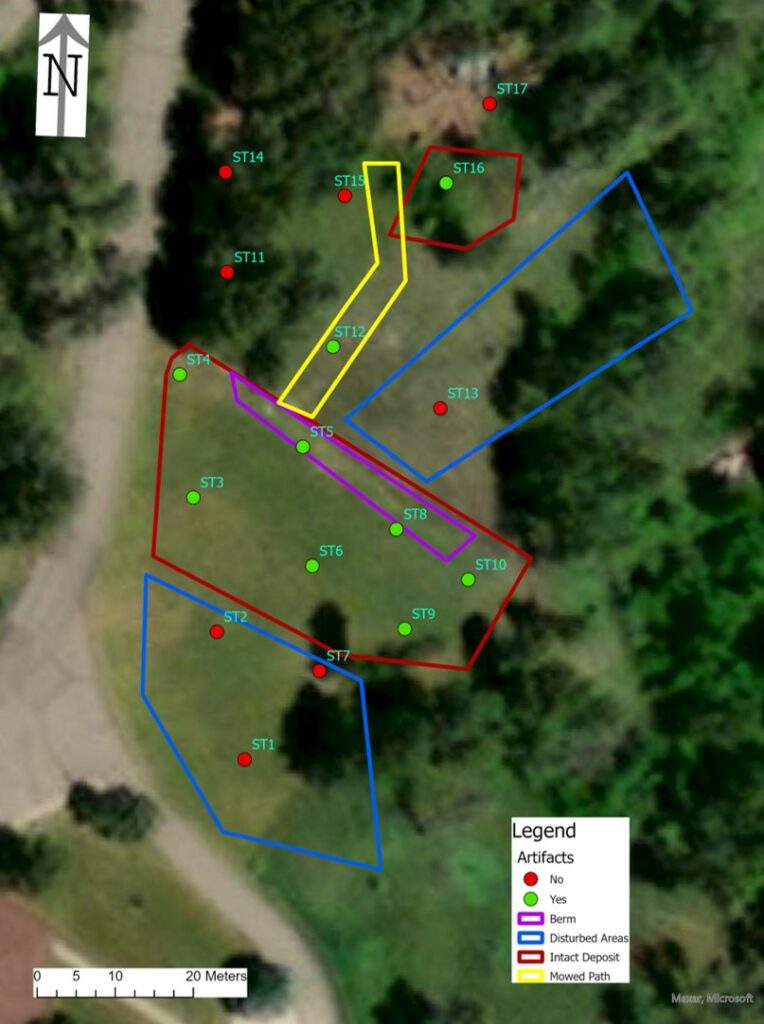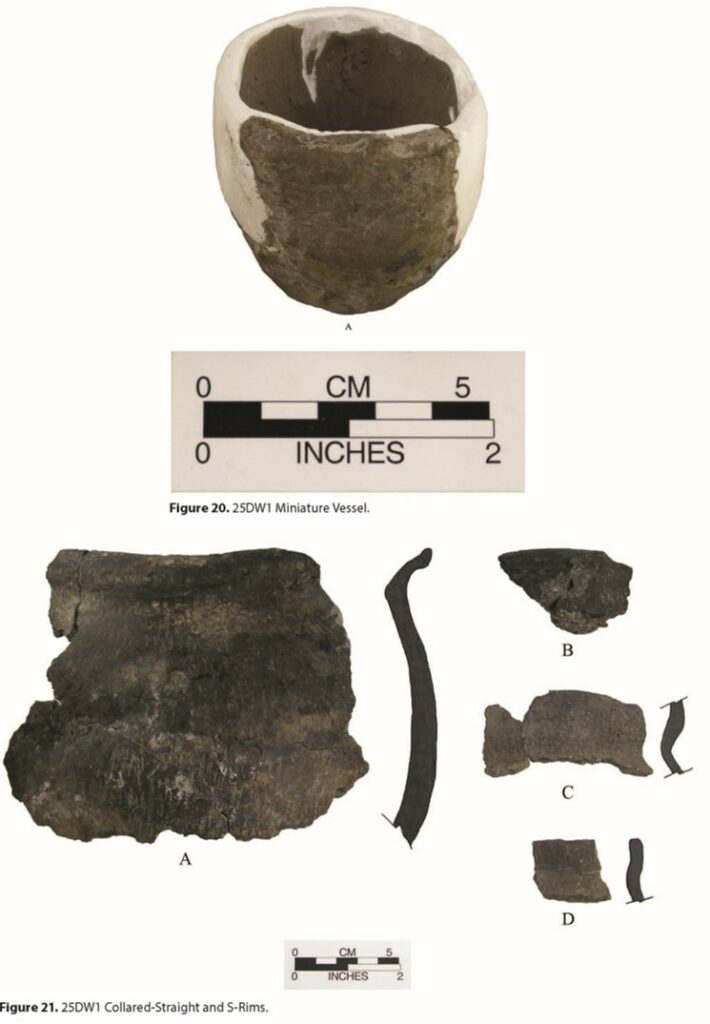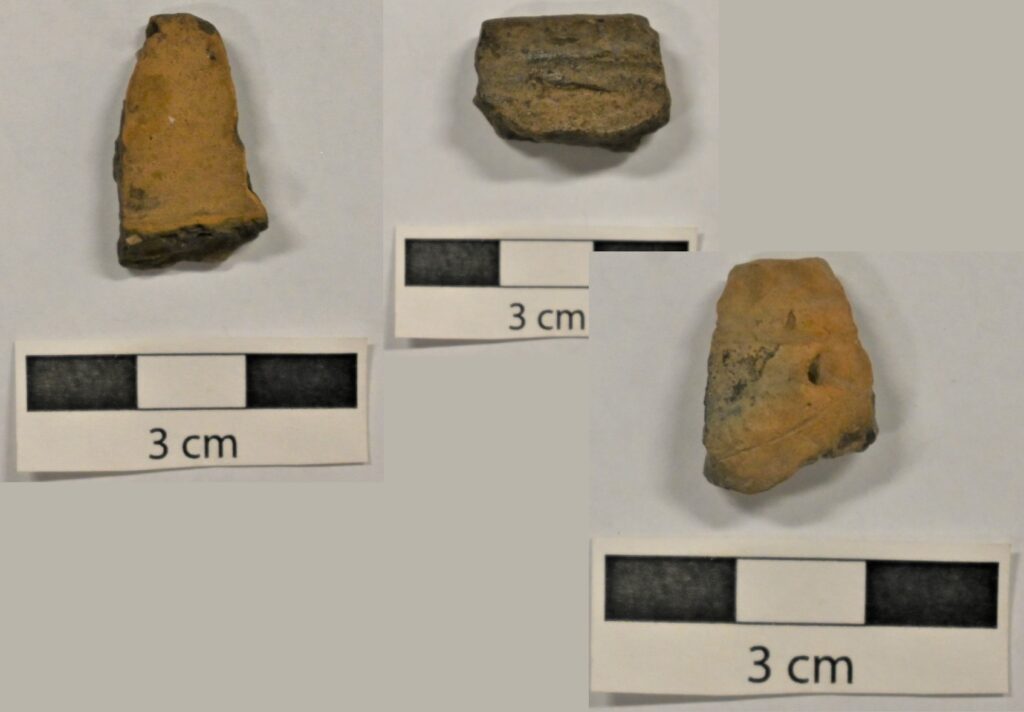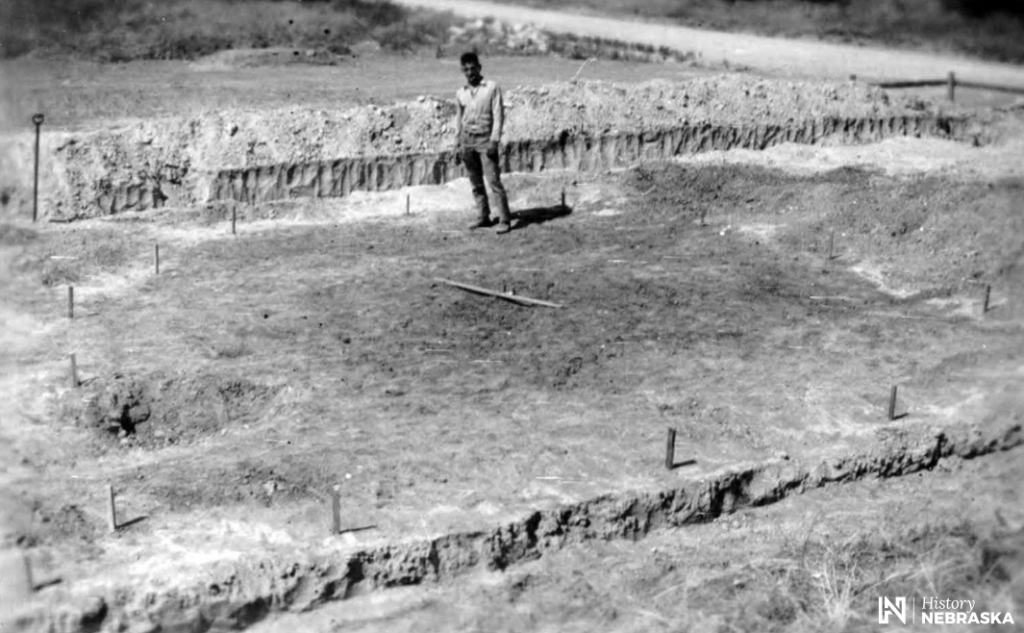
Figure 1: House location visible as dark circular soil
The Chadron State Park site (25DW1) is situated on a nearly level butte within the Chadron State Park grounds, overlooking the gently-flowing Chadron Creek, several miles south of Chadron, Nebraska. The site was originally excavated by A.T. Hill in 1940 after it was uncovered during the construction of a recreation hall. Hill’s work focused on a house floor and its associated midden, as well as a burial (Figures 1 & 2). Though the discovery of these features resulted in moving the recreation hall further to the north, it was assumed at the time that most of the site had been destroyed. The site was revisited in 1979, and while a scatter of artifacts was observed on the ground surface, the site was described as mostly destroyed. The 2008 site file for 25DW1 also notes the sites’ destruction.
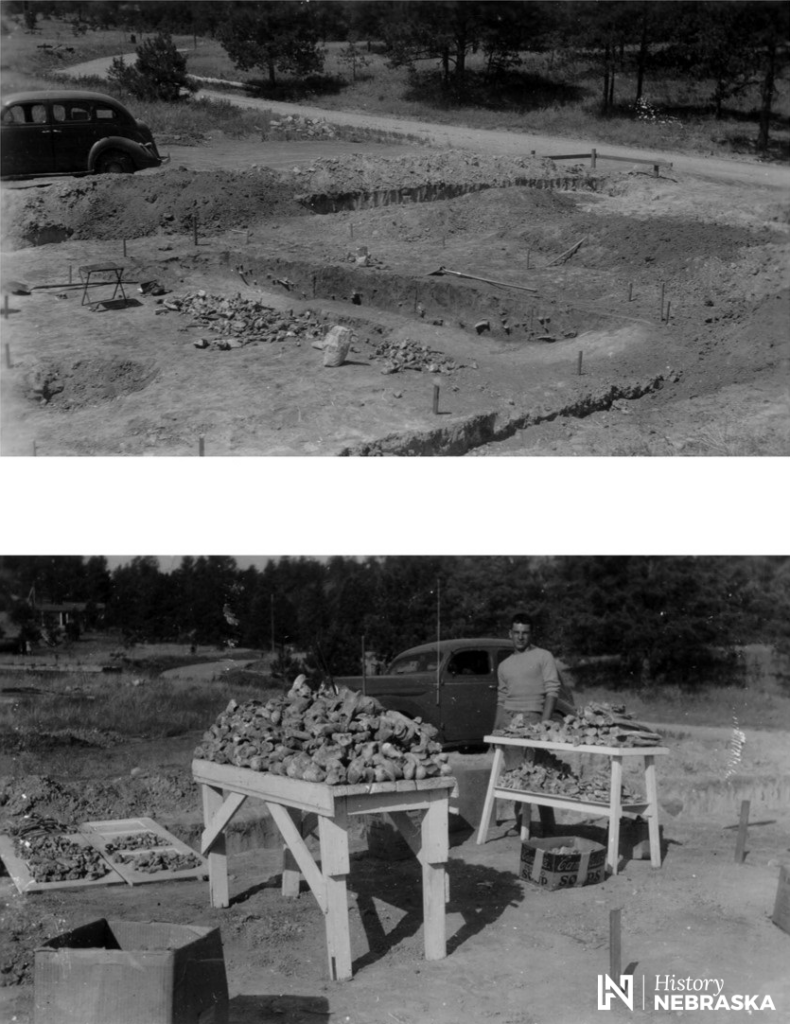
Figure 2: Top: General 1940 excavation areas. Bottom: Tables of bison bones recovered from the site in 1940.
In November of 2022, History Nebraska staff arrived at the site ahead of the proposed construction of a miniature golf course with little expectation of finding intact archeological deposits. Led by Archeologist Nolan Johnson, the initial pedestrian survey revealed a broad scatter of surface materials present at the site. A grid was established for shovel testing and spirits were high. Overnight snow blanketed the area ahead of the second day, but work proceeded in the cold and windy northern Nebraska weather. Testing soon encountered subsurface materials and by the end of the third day, it became clear that an intact cultural layer capable of containing additional features still exists at 25DW1 (Figure 3).
Materials recovered during testing were consistent with those collected in 1940 and described in former History Nebraska Archeologist Terry Steinacher’s 2014 report on the site. While faunal remains, chipped stone tools and debris, shells, and more were present, of particular interest were ceramics (Figures 4 and 5). The site contains a mixture of Woodland and Central Plains Tradition sherds in the same stratigraphic layer. In addition, some individual sherds contain traits of both pottery traditions. This suggests that the site may have been occupied during a period of transition between the two distinct material cultures. Such sites are uncommon and can provide archeologists with a better understanding of when this cultural shift took place in western Nebraska, and how it was expressed materially. As a result, 25DW1 remains partially intact and retains the potential to contribute valuable archeological data though it was thought to have been destroyed for the last 81 years.
Aside from scientific value, work at the Chadron State Park site is an excellent example of the collaboration between History Nebraska and Nebraska Game and Parks. Both agencies have an interest in protecting the state’s historic and cultural resources and preserving them for public benefit. Working together on projects like this one allows archeologists a chance to examine sites before they might be disturbed, and provides a richer understanding of the land at Chadron State Park and the people who once dwelt there.
Published September 5, 2023

